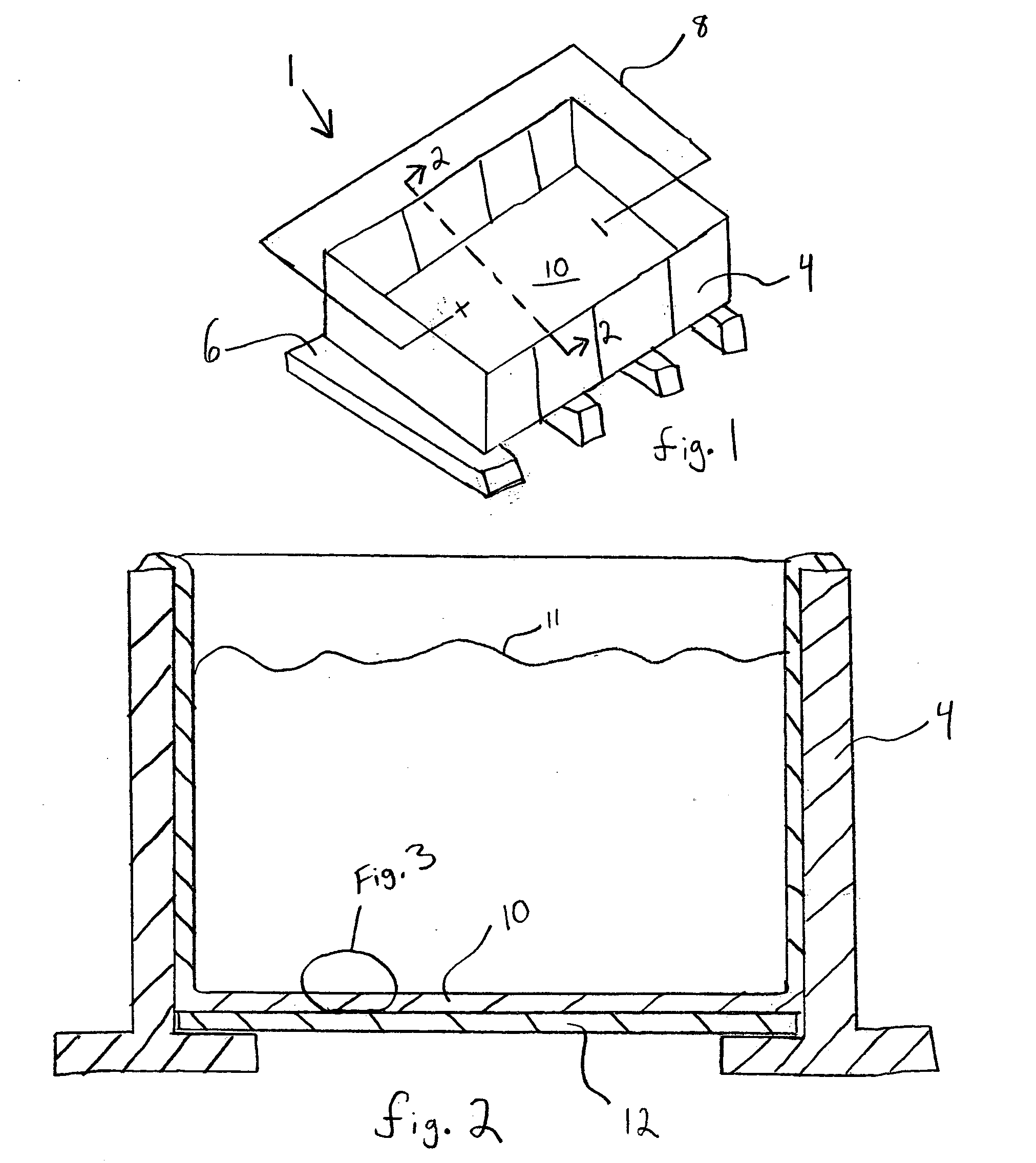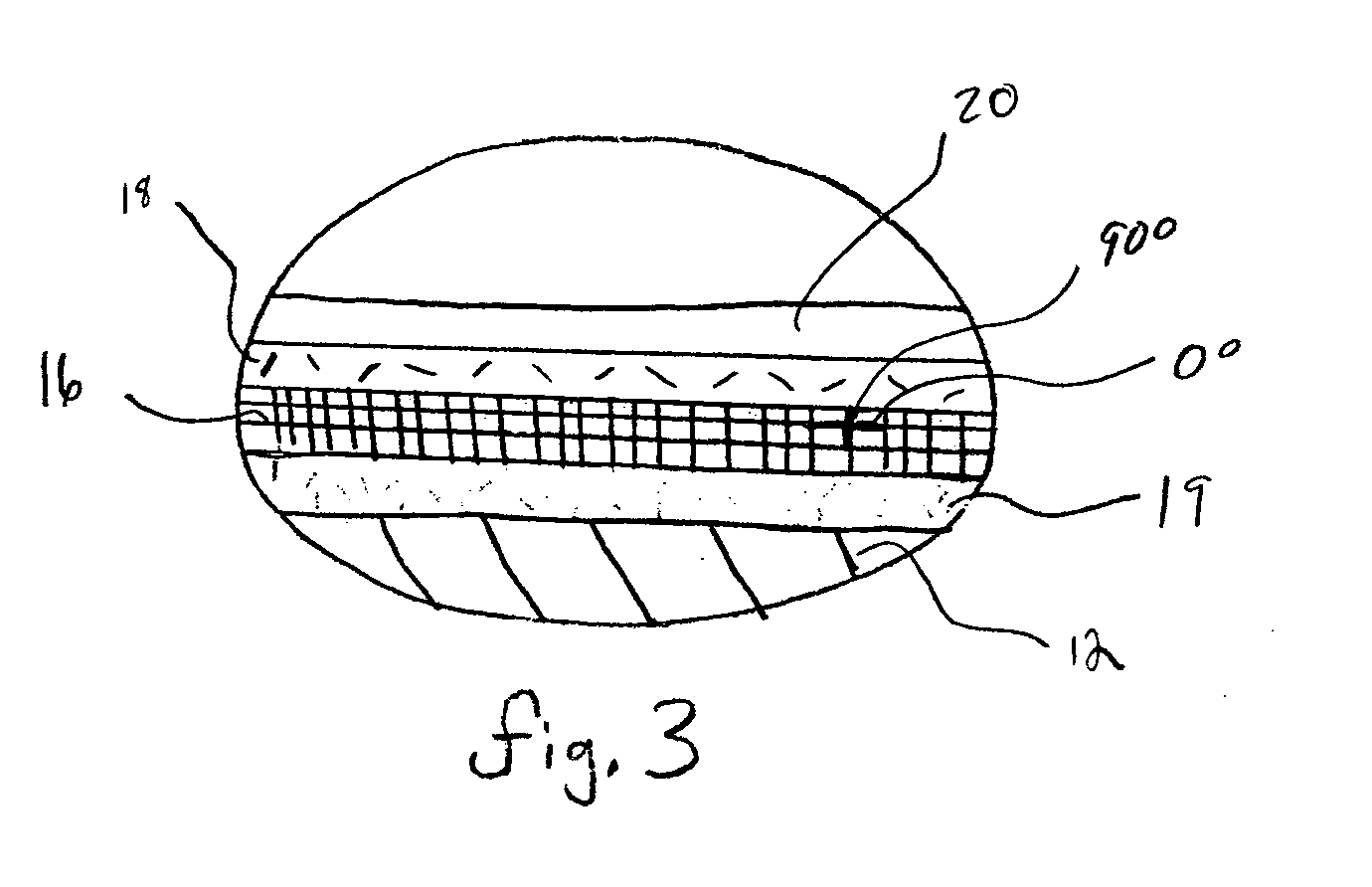Containment structures and methods
- Summary
- Abstract
- Description
- Claims
- Application Information
AI Technical Summary
Benefits of technology
Problems solved by technology
Method used
Image
Examples
Embodiment Construction
[0025] As shown in FIGS. 1-3, the invention generally relates to a container having a permanently and substantially continuously affixed liner. For example, the container may be an electrolytic cell 1. The cell 1 includes a containment structure 4 including a base 6. Preferably, the containment structure and base are composed of concrete or polymer concrete. A means for providing electrical current such that a circuit 8 is formed preferably takes the form of a metal cathode and anode connected to a source of electricity. Permanently bonded upon the interior of the structure 4 is a resin and Fiber Reinforced Polymer (FRP) liner 10 that is at least partially contacted by liquid 11.
[0026] As seen in the cross-sectional view of FIG. 2, the liner 10 is bonded at every point in a substantially continuous manner so that any breach is completely localized to the damaged site. Such localized containment of any breach of the liner is extremely important in the electrolytic cell industry beca...
PUM
 Login to View More
Login to View More Abstract
Description
Claims
Application Information
 Login to View More
Login to View More - R&D
- Intellectual Property
- Life Sciences
- Materials
- Tech Scout
- Unparalleled Data Quality
- Higher Quality Content
- 60% Fewer Hallucinations
Browse by: Latest US Patents, China's latest patents, Technical Efficacy Thesaurus, Application Domain, Technology Topic, Popular Technical Reports.
© 2025 PatSnap. All rights reserved.Legal|Privacy policy|Modern Slavery Act Transparency Statement|Sitemap|About US| Contact US: help@patsnap.com



